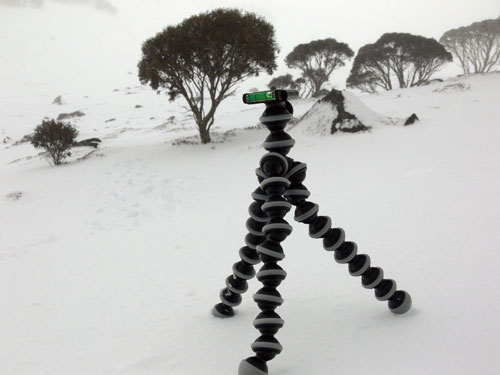This article aims to help you to chose the right kind of tripod for your digital camera but I’m going to start by saying tripods are useful only in some specific situations.
Carrying a heavy tripod around all the time after buying it will only make you hate it. After a while you’ll end up leaving it at home instead of taking it on photo day trips when you actually need it.
Don’t use a tripod if you can help it. Having to carry one is a pain and thus cripples creativity. Only use a tripod for still subjects either at night or when you need long shutter speeds of about 1/60 or slower.
It’s a common misconception among photo teachers and amateurs that tripods are good, although no one really knows why. I guess some people just associate tripods with serious photography.
Nah, no one needs a tripod unless the shutter speed is long. Today VR and IS lenses also help obsolete them. Long shutter speeds only happen at night, or if you are at f/22 for a lot of depth of field.
– Ken Rockwell
Types of Tripod
General purpose, large, tall tripod

Small, light, short tripod for travelers

When a Tripod is Not Needed
The vast majority of digital cameras sold these days, both compacts and SLR’s, can take sharp photos outdoors regardless of whether the sun is out or it’s cloudy. Using a tripod for these photos is almost always completely unnecessary and means you’re carrying weight around for no reason.
Situations When a Tripod is Handy
Shooting Video – Placing your camera or video recorder on a tripod is the difference between steady video footage and shuddery nausea inducing video. Which type of video do you think your audience prefers?
Night and Low Light Photography – A tripod is essential when taking photos at night and quite helpful in low light situations to keep your camera steady for long exposures otherwise all your photos will be horrible and blurry. A classic situation which requires a tripod is taking fireworks photos
Panorama photos – such as my New Zealand Southern Alps panoramic photo below are stitched together from a series of overlapping horizontal photos which need to be all at the same exact height taken from one location.
Long and Heavy Zoom Lenses – such as the ones used for sports and wildlife photography need a tripod to hold their weight.
Self Photos – If you like traveling by yourself or going on photo daytrips by yourself like I do then without a tripod you’ll rarely end up with any photos of yourself at the places you visited.
A good example is the photo below taken using my camera with a 10 second delay timer and Gorillapod. No one else was there so the only reason I have that photo was because I packed a Gorillapod in my backpack.
General Tripod Buying Tips
If you’re going to buy a general purpose, large, tall tripod keep these factors in mind:
- In a crunch situation when you need to buy a tripod fast a cheap no-name one is better than none at all. But I’d rather trust my camera equipment to a decent specialist tripod brand like Velbon or Manfrotto
- Don’t buy a really cheap plastic tripod which might break under the weight of a camera (I’ve seen it happen). A good tripod should last you many years, they don’t go obsolete in a year or two like digital cameras do.
-
Make sure your tripod is tall enough to bring your camera up to eye level without extending the centre column, you camera will be less stable with the centre column extended. Generally your tripod “weight rating” wants to be about twice that of what you plan to put on it, so if you’re using a Canon 5DMk2 and a Canon 24-70mm lens, the package weighing in at just under 2kg’s you will need a load rating of about 4kg’s – This is very important, you want a stable tripod, not a bowl of jelly
– Digital Rev - Tripod weight is a very personal area – I suggest taking your camera to a specialist camera store and trying out different tripods. See if they can take the weight of your camera, remain steady in a windy situation but still be light enough overall so the tripod you buy isn’t left at home all the time because you hate how heavy it is and all the space it takes up.
- There are more tips at the Velbon website explaining tripod jargon like Ball & Socket, Monopod etc
Disclaimer: my own tripod broke just before I was due to do a photography job taking Sydney New Years Eve Fireworks Photos. Velbon’s Australian distributor kindly lent me a semi-professional Sherpa 750R tripod at short notice to use for that event and review if I wanted to.




Leave a Reply